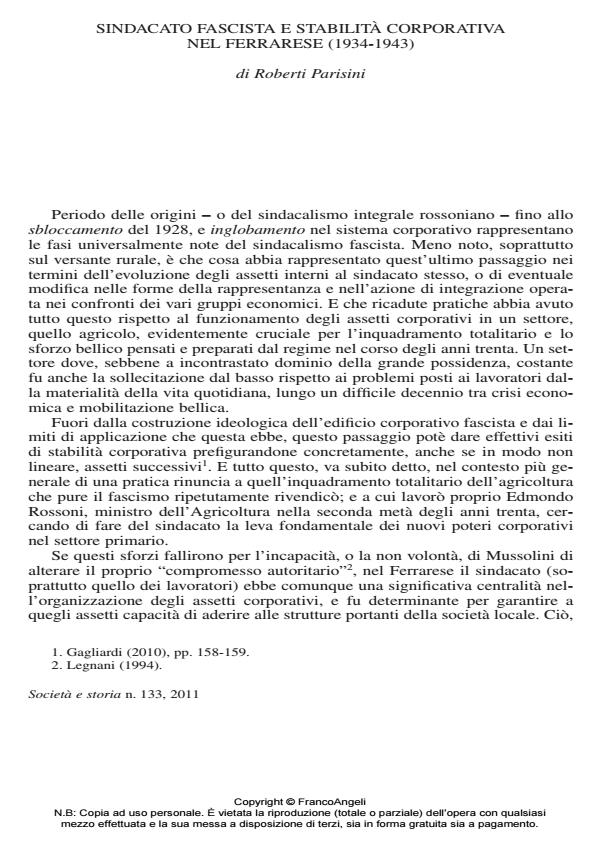Fascist union and corporative stability in Ferrara (1934-1943)
Journal title SOCIETÀ E STORIA
Author/s Roberto Parisini
Publishing Year 2011 Issue 2011/133
Language Italian Pages 25 P. 525-549 File size 519 KB
DOI 10.3280/SS2011-133005
DOI is like a bar code for intellectual property: to have more infomation
click here
Below, you can see the article first page
If you want to buy this article in PDF format, you can do it, following the instructions to buy download credits

FrancoAngeli is member of Publishers International Linking Association, Inc (PILA), a not-for-profit association which run the CrossRef service enabling links to and from online scholarly content.
This essay describes, trough the study of Ferrara county, the role played by union (particularly labour-union) in the establishment of new corporative structures in agriculture by the fascist government. At the same time, it throws light upon a process shared by a great part of low Po valley, areas with a strong presence of agricultural capitalism and labour-movement. Though the fascist corporative system shows its ideological weakness and totalitarian limits, despite the efforts of Edmondo Rossoni, at the local level it works thanks to the leading role of the labour-union. It ensures practical stability to the whole corporative structure and enables the regime to reach its desired economic and social aims; even with the heavy limits and the important inefficiency which characterized the management of resources during the war.
Keywords: Syndicalism; agriculture; totalitarism; second World War; cooperatives; fascism
- La storia economica contemporanea in quaranta anni di "Società e storia" Marco Doria, in SOCIETÀ E STORIA 178/2023 pp.783
DOI: 10.3280/SS2022-178007 - La storia sociale contemporanea in Italia: tempi e temi Il caso di «Società e storia» Nicola Labanca, in SOCIETÀ E STORIA 178/2023 pp.743
DOI: 10.3280/SS2022-178006
Roberto Parisini, Sindacato fascista e stabilità corporativa nel Ferrarese (1934-1943) in "SOCIETÀ E STORIA " 133/2011, pp 525-549, DOI: 10.3280/SS2011-133005